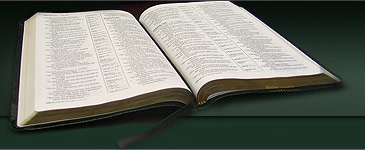Babylon Has Fallen
What does “Babylon” represent in Bible prophecy? How many different manifestations of “Babylon” are there? Why does the second angel say, “Babylon is fallen, is fallen”? What is the “wine” of “Babylon”?
The second angel’s message is an announcement that, “Babylon is fallen, is fallen, that great city because she made all nations drink of the wine of the wrath of her fornication.” Revelation 14:8. “Fall” is a term in the Bible that recalls the tragedy of Lucifer who became Satan (Isaiah 14:12), and the “fall” of our first parents in Eden. I Timothy 2:14. It describes a process which begins in glory but ends in tragedy. “Babylon” is a term in Scripture that is used to represent the later stages of that process of apostasy and rebellion. It is drawn from Old Testament sources and used symbolically in the New Testament. Satan is the original “king of Babylon,” but the Bible also refers to many human models of apostasy. Her “wine” is her false teachings, which she forces on people through the illicit union of Church and State (her “fornication”). The “wrath” is her severe penalties administered against dissenters.
1. The tower of Babel was the first “Babylon.” It was built on the foundation of unbelief and defiance. It resulted in confusion. “Babel” meant “gate of the gods,” and was man’s attempt to gain heaven by his own works. The Bible clearly teaches that Jesus is the Way to heaven. He is the “Door” of the sheepfold, the “Ladder” of Jacob’s dream. John 1:50, 51.
2. A later edition of Babylon was the kingdom of Hammurabi, who lived about the time of Abraham. His government featured the famous “code of Hammurabi,” carved in stone, now visible in the Louvre Museum in Paris, France. This code was made by man and is similar, but not quite the same and the laws given by God to Moses. This also is a characteristic of “Babylon,” having a law that’s similar, but not exactly the same as God’s holy law.
3. The most well known Babylon of the Old Testament was that founded by King Nebuchadnezzar and his father Nebopollassar at the time of Daniel, 605 B.C. This Babylon was used by God in its beginning to discipline Judah, but because she took the credit for her successes to herself and to her pagan deities, because she overreached in oppressing God’s people and “refused to let them go,” because she indulged in the sin of pride and thought herself equal to God, her priests using the title “Pontifex Maximus” (the “Greatest Bridge Maker”), because she relied on the wisdom of sorcery and magic instead of God’s wisdom, she fell under God’s judgment. She was “weighed in the balances and found wanting.” “Babylon is fallen” was predicted by the prophet Jeremiah (see chapters 50 and 51), which foretold the shocking fall of literal Babylon, as well as the fall of apocalyptic Babylon.
4. In the New Testament, there are several references to symbolic “Babylon.” Because in his day Rome was the “oppressor” and stood in defiance of the principles of God’s kingdom, Peter referred to it as “Babylon.” I Peter 5:13.
5. During the Middle Ages, the church which had been established in purity and truth by Jesus became corrupted through paganism. It “fell” spiritually far from Scripture. The Sacred Word was withheld from the people. It was a crime to own a Bible at that time! The Ten Commandments, God’s holy law, was changed, removing the second commandment (making and worshiping images), changing the fourth commandment (making the first day of the week the day of worship instead of the seventh) and splitting the tenth. Teachings such as the “immortal soul,” a never-ending hell, penance and purgatory crept into the Church. The Church joined forces with the state to enforce its religious dogma, persecuting and killing millions. The head of the Church took the title of the ancient Babylonian priests, “Pontifex Maximus,” and laid claim to many blasphemous titles of equality with God and a human priesthood was established, giving authority for mortal man to forgive sins,
something only God can do. The priest was endowed with “creative power,” supposedly changing the wafer into the actual body of Christ.
6. Rising against the abuses of the Church of the Middle Ages, reformers like Martin Luther and John Calvin attempted to bring people back to a simple adherence to the Word of God instead of human traditions. They “protested” against the heresies of the Church, thus became known as “Protestants.” “Sola Scriptura” became the slogan of these valiant warriors for God. However, though beginning with such lofty ideals, the followers of these spiritual giants did not advance beyond the accomplishments of their forefathers, and in fact many of the teachings they had pioneered (especially in prophetic interpretation, identifying the Church of the Middle Ages as the “harlot” of Revelation, have been discarded by many Protestant theologians of today. The teachings of a “secret rapture” and “dispensationalism” testify that modern Protestantism has likewise “fallen” from her lofty beginnings.
7. There awaits yet one more edition of “Babylon,” when in the very last days the components of the papacy, fallen Protestantism and spiritualism will join forces together to enforce religious dogma on the world. Not yet has it been fulfilled that “she has made all nations drink of the wine of the wrath of her fornication.” When that day comes, the “fall” of “Babylon” will be complete.
